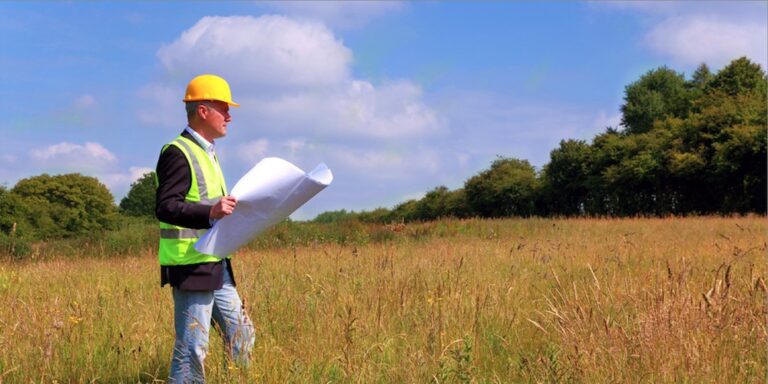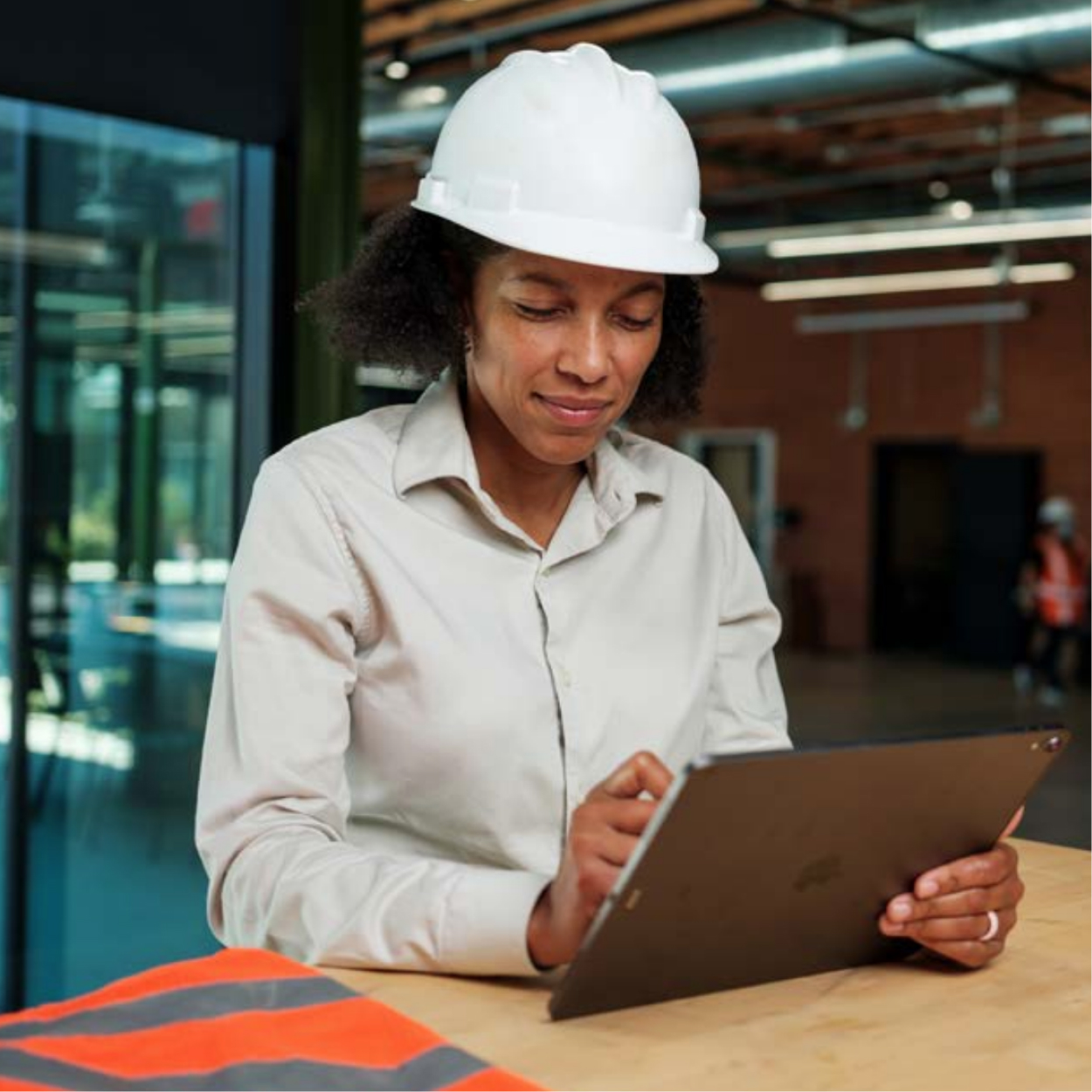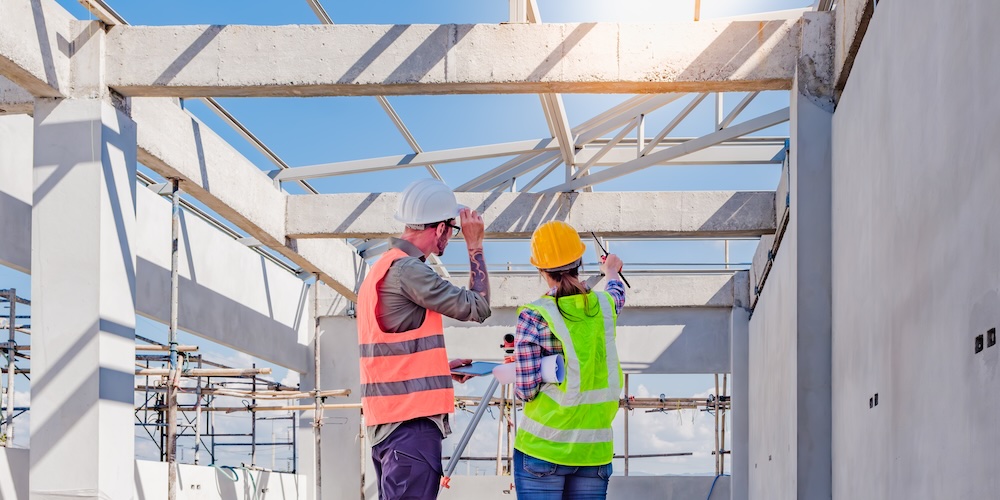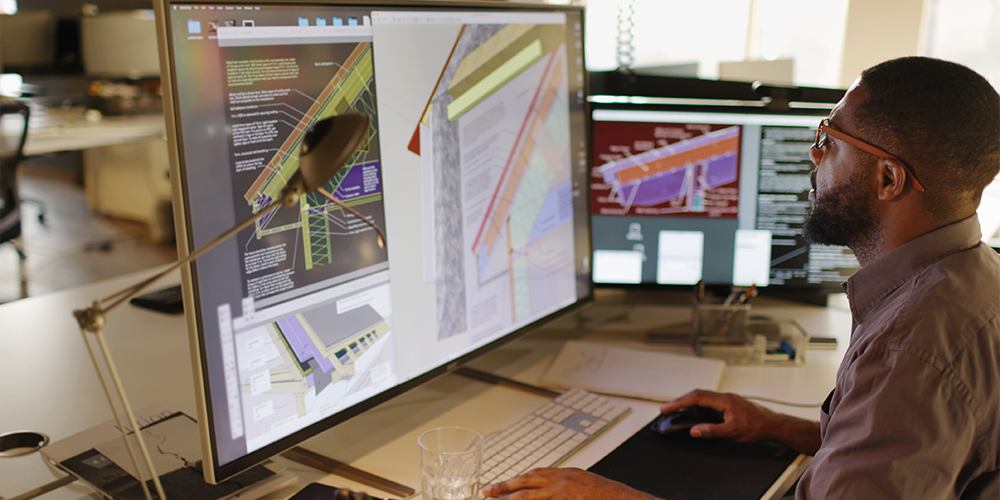— 16 min read
The Predevelopment Phase of a Construction Project Explained
Last Updated Aug 8, 2024
Last Updated Aug 8, 2024

Before any construction workers or equipment ever arrive on site, every successful project begins with a thorough and strategic predevelopment process. During this stage, project owners, financial analysts designers and engineers work together to turn vague ideas into feasible plans that allow the owner to realize a return on their investment.
Predevelopment involves tasks as varied as site selection, land acquisition, financial planning, occupancy requirements and regulatory approvals. The process might see developers scouting ideal locations, navigating complex zoning laws, or crafting budgets for various costs and future revenues.
Here, we’ll explore each stage of the predevelopment process, from ideation to budgeting to regulatory approval. We’ll provide a detailed breakdown of each phase and discuss how each impacts and shapes the subsequent stages of a construction project.
Table of contents
Importance of Predevelopment
Predevelopment is the foundation that determines the entire lifecycle of a construction project — from conception through construction to operation or eventual sale. The primary goal of the predevelopment phase is to identify, analyze, and mitigate risk.
During the predevelopment stage, project owners will answer the following key questions (and many more):
- Is the project viable?
- Will the community around it support it?
- Does it meet the requirements to function effectively and provide the desired ROI?
- Can the project be completed with minimal risk?
- What is the most efficient way to construct the project?
- How can the project be financed?
- Does the project adhere to regulations?
Answering these questions well can help project owners determine which projects are actually realistic. For feasible projects, predevelopment takes project owners on a journey to:
- Identify the best location
- Secure financing, capital, and investment partners
- Create a financial plan
- Navigate regulatory approvals
- Prepare for preconstruction
When the predevelopment stage is completed with careful and thorough analysis, the likelihood of a project’s success is substantially higher, as several risks will have already been taken into account and dealt with before construction ever begins.
Major Phases in Predevelopment
Before a shovel ever hits the dirt on a commercial, residential, public infrastructure, or industrial project, owners work through a variety of predevelopment stages that involve architects, engineers, financial institutions, regulatory authorities, contractors, and many other stakeholders.
| Phase | Key Tasks | Stakeholders Involved |
| Conceptualization and Feasibility | Develop the initial project concept, conduct a feasibility study, establish a preliminary budget and schedule, and conduct ROI analysis. | Project owners, Architects, Engineers, Finance/capital markets |
| Site Assessment and Land Acquisition | Assess the potential site for construction and purchase or lease the land. | Project owners, Site Engineers, Surveyors, Real estate brokers |
| Budgeting, Financing, and Regulatory Approval | Create a project budget, secure financing, and obtain necessary regulatory approvals. | Project owners, General contractors, Financial institutions, Regulatory authorities |
We’ll look at each of these major phases in detail below.
The Preconstruction Playbook
Learn to navigate challenges, understand root causes, and harness technology for smoother project execution. Revolutionize your approach and unlock your team's potential.

Conceptualization & Feasibility
In the initial predevelopment stage, project owners must develop an idea and determine whether it is feasible to construct. At the beginning of this stage, project owners generate an idea — and by the end, they decide whether the project should move forward.
Depending on the type of construction project and who owns it, this decision may be based on different criteria, including:
- Return on investment (ROI)
- Social, economic or environmental impact
- Job creation
- Community & city council support
To illustrate the process, we will follow a developer through predevelopment for a hypothetical commercial project.
Idea generation
At the project's outset, the idea may be broad: A new office building, a manufacturing plant, a subway line, or a library, for example. This concept is often broad at the outset, but the team will refine it throughout the concept and feasibility analysis stage.
Here's an example: A private developer is considering building a tech park that houses startups and provides co-working spaces.
Needs Analysis
During a needs analysis, the project team performs a detailed examination to define the specific objectives and goals the project intends to achieve. For example, they will explore particular usage requirements, aesthetic considerations, and performance criteria.
The tech park must include open office spaces, lounges, meeting rooms, event space, and an outdoor or green space.
Market Research
Market research takes place early in the predevelopment process to determine whether a project is worth pursuing. In general, the goal is to determine whether demand, competition, and regulatory burdens will make the project profitable or worthwhile. Market research often includes a basic financial analysis to determine whether sufficient funding is available and/or the project will likely produce a return on the investment.
This analysis will depend heavily on the type of project. For example, a Fortune 500 company looking to build an office tower as part of their capital spend may forecast headcount and revenue in different urban markets to determine where to build the project. On the other hand, a commercial developer may analyze occupancy and lease rates in the local market to project their net operating income, or “the line.”
Market research indicates a growing population of knowledge workers, leading to rising demand for collaborative tech spaces. According to an early financial forecast, at 80% occupancy, the tech park should be cash flow positive in Year 1 and profitable in Year 5.
Preliminary Design
Through the preliminary design process, the concept is further refined. Architects create sketches and 3D renderings that identify potential conflicts and provide an initial look at how the project might take shape. Importantly, the design process highlights the project’s scope and scale, influencing timeline, cost, and ultimately feasibility.
Depending on the project, preliminary drawings can be key to gaining city and community support. Design firms often play a key role in getting projects approved and accepted by AHJs (Authority Having Jurisdictions).
Architects create initial layouts of the tech park to provide scope and address the developer’s needs. The developer presents the designs for preliminary approval by the relevant AHJs.
Feasibility Study
The feasibility analysis is the first major milestone a project must overcome. This step identifies whether a project makes sense in a variety of ways:
- Technically: Can it actually be built…
- Economically: …at a reasonable cost…
- Legally: …according to local regulations…
- Environmentally: …with minimal impact on the people and places around it…
- Socially: …and with support of the community?
Ultimately, the project owner and other stakeholders will review the feasibility report to decide whether to proceed with the project. Any problems with feasibility can end a project, but financial considerations are often the most pressing for private developers – after all, a project without financing can’t get built.
However, a project whose initial concept passes muster by surviving a feasibility study is ready to identify the right piece of land to build on. A feasibility analysis often provides a requirement portfolio that dictates the minimum requirements a parcel of land must have to support the project.
Studies show the tech park is viable but some considerations need to be made for parking and compliance with local environmental regulations. The report is presented to stakeholders.
Decision
Depending on the results of the conceptualization and feasibility stage, the project owner should be ready to decide on whether to proceed to the next phase, modify the concept, or abandon the project.
The decision is made to proceed with the project with minor modifications to the concept to accommodate parking and adhere to environmental regulations.
Site Assessment and Land Acquisition
After the project owner has established the project’s feasibility, they begin to assess various sites and attempt to acquire suitable land. Throughout the process, the project owner must take care to select a site based on a number of factors, including physical characteristics, demographics, zoning laws, and environmental factors.
Site Selection
During the site selection process, the project team scouts and identifies potential locations that fit the project’s needs in terms of accessibility, size, and demographics. During this stage, they will consider various factors that make land more or less attractive to development. For example, the team might consider:
- Infrastructure availability: Existing infrastructure like roads, water supply, sewage, electricity, and internet connectivity can significantly impact development costs and timelines.
- Constructability: Tests on soil composition, bedrock depth, and rainwater retention can help determine whether the site can support the designed building.
- Existing conditions: Easements, hazmat abatement, abandoned wells, etc. that can affect access to the site and development costs.
- Surrounding structures: Nearby buildings, landmarks, or natural features can affect the site’s desirability, potential uses, and design considerations.
- Demographics: The local population’s characteristics, such as age, income, education, and lifestyle can inform the project’s purpose and design.
- Acreage: The area of the plot will determine what can be built there and may affect everything from the scale of the project to its design and layout.
- Accessibility: Ease of access to the site, whether by road, public transportation, or foot, can impact its viability for certain types of projects. Moreover, accessibility for construction vehicles and equipment during the construction phase is a critical consideration.
- Future growth prospects: Anticipated changes in the area, like population growth, infrastructure plans, or upcoming developments, can impact the long-term success of the project.
The team identifies urban locales in proximity to major tech hubs, offering a vibrant, tech-savvy population for a new tech park.
Site Assessment
As the team considers a potential site, they perform a site assessment to evaluate physical and environmental characteristics. For example, a project’s viability could be affected by some of the following land characteristics:
- Soil stability or contamination
- Groundwater levels or drainage conditions
- Proximity to geological hazards (like fault lines or landslide-prone areas)
- Presence of protected animals or species
- Flood risks or stormwater management needs
- Noise levels
- Impact on local traffic
- Aesthetics of surrounding area and structures
- Potential cultural heritage sites
Before purchasing land, the project team needs to carefully evaluate the site for various factors that could significantly alter the project’s feasibility. For example, a geotechnical engineer could find soil stability issues that would lead to exorbitant construction costs that aren’t justified by potential revenues.
In another case, environmental protection laws may lead to extensive project delays, enabling competitors to get their projects online more quickly. Traffic impacts, archaeological studies, flood risk, and many other factors can make specific sites absolute non-starters for any given project.
The team commissions geological surveys that confirm stable ground conditions, while environmental assessments ensure the project won’t unduly disrupt local wildlife or elevate noise and air pollution levels.
Legal Review
Suppose a potential site has the physical and environmental characteristics necessary for the project’s construction and profitability. In that case, the project’s legal team will perform a legal review to thoroughly examine all regulatory and legal factors that could affect the project. For example:
- Zoning regulations
- Building codes
- Land rights
- Environmental regulations
- Permit requirements
- Legal risks
- Public approval process
The legal team ensures the selected site aligns with the property title and commercial zoning regulations, and resolves any potential issues related to land acquisition.
Site Acquisition
If the legal review concludes that the project can remain feasible while complying with all necessary regulations and mitigating legal risks, then the project owner can proceed to the land acquisition stage.
This phase involves securing the site both legally and financially:
- Negotiating terms: The project owner, often with the assistance of a broker, negotiates with the current landowner on the terms of purchase or lease. It’s common for the project owner to negotiate an “option” to buy the land, often by putting it in escrow or under a preliminary lease agreement, giving them the exclusive right to purchase the land within a specified timeframe. The project owner pays a fee for this option, allowing them to secure financing, conduct more detailed assessments, or finalize other aspects of the project plan without the risk of losing the site to another buyer.
- Conducting due diligence: During this period, the project owner conducts intensive investigations to verify important details about the land. These investigations can include confirming exact boundaries, ensuring the validity of the title, identifying any land use restrictions, and finding potential encumbrances. The due diligence process is critical to mitigate potential risks and is typically conducted during the option period if one is in place.
- Securing financing: During the option period, the project owner works to secure funding for the land acquisition and the project as a whole.
- Exercising the option or finalizing the purchase or lease: Once the due diligence is completed, financing is secured, and all conditions have been met, the project owner can decide to exercise the option and finalize the land purchase. Alternatively, if an option was not part of the agreement, they can finalize the lease or purchase agreement to acquire the land directly.
This flexible approach to land acquisition allows the project owner to reduce risk and secure the necessary resources and approvals before committing significant funds to purchase the land outright. Upon successful completion of land acquisition, the project owner can proceed with the detailed planning and design of the project.
The developer finalizes the land purchase and proceeds to more detailed planning and design of the tech park.
Scheduling, Budgeting & Financing
Once a site has been selected, the project owner proceeds with preliminary scheduling, budgeting, financing, and regulatory approval. Notably, these activities typically begin before the land is actually acquired.
Moreover, while a project’s financing is usually settled at the time land is purchased, budgets often shift during the procurement stage and full regulatory approvals are not finalized until later in the project when designs and plans are more detailed.
Budgeting
Budgeting requires the project team to create a detailed construction financial plan that considers various costs like land acquisition, construction, and operation. The owner will also need to consider how they will cover the costs. This analysis will differ depending on the type of project.
For example, public agencies may account for future tax revenue, tolls or fees that will allow them to pay off a potential bond and cover operational expenses after the project is complete. A commercial project owner will consider predicted future revenues, including ongoing revenue (e.g., rent) or payment for selling the project upon completion.
A portion of the budget is typically set aside as a contingency fund to handle unexpected costs that may arise during the project. This could be due to unforeseen construction issues, changes in material costs, delays, or even regulatory changes.
The budget developed at this stage will determine the project’s ROI, and financial terms offered by investors or lenders. After construction begins, the owner will track expenses to compare budget vs. actuals.
A well-structured budget also accounts for the time value of money, acknowledging that costs paid today have a different value than those paid in the future. Therefore, future cash flows are discounted back to present value terms to enable an accurate comparison of costs and revenues over time. Furthermore, budgets consider the cost of regulations, taxes, financing, and inflation.
Budgeting is a cornerstone of financial planning during the predevelopment stage. The accuracy of cost and revenue projections – as well as risk analysis – provide a complete financial picture that helps stakeholders understand a project’s potential profitability and return on investment.
The team prepares a comprehensive budget for the tech park. They factor in the price of the land, costs of building and outfitting the park’s buildings, ongoing maintenance costs, and income from leasing office space.
Scheduling
During this stage, the project team (and potential investors) will want to see a preliminary construction schedule — after all, time is money. Often, an experienced project manager or construction manager will sketch out a project schedule to determine the construction timeline. They may seek input from general contractors or third-party estimators who are experienced in planning or building the same type of project.
This schedule will be refined and updated during preconstruction as the general contractor and subcontractors join the project.
The project owner hires a construction manager with experience building commercial projects, who develops a preliminary 18-month schedule for excavation and construction of the tech park.
Financing
Financing is typically secured after the budget and early schedule are determined. The project owner may secure a combination of owner equity, loans, public funding, private investment or general obligation bond (on public jobs) to finance the project. For example:
- Private investment from equity investors or strategic partners
- Owner equity, or funds the owner contributes from their own resources
- Bank loans or lines of credit, often secured by the land and future project
- Public funding sources such as grants or tax incentives, particularly for projects with public benefits, like affordable housing or green building design
- General obligation bonds are used by government agencies to finance construction projects and are secured by future revenue, often in the form of taxes
Private investment and owner equity are often leveraged in order to access cheaper money from banks, lines of credit or public funding. During the option period, the project owner may use this time to finalize their budget and secure commitments for financing based on their detailed project plan.
The tech park owner raises funds from several sources:
- The project owner contributes 20% of the costs
- A local bank provides a construction loan for 60% of the budgeted cost
- Future tenants provide 10% through pre-leasing commitments
- A state grant supporting investment in tech hubs is secured for 10%
Regulatory Approval
Obtaining regulatory approval is a process that begins even before land acquisition and continues until the project is ready to break ground. This involves satisfying local, regional, and even national regulations, and could include:
- Community buy-in
- Land use and zoning permissions
- Environmental approvals based on environmental impact assessments and other studies
- Building permits, which require detailed design and construction plans
- Other permits for health and safety, air and water quality, natural resources, fire departments, utilities, or transportation agencies
During the option period, the project owner can seek these approvals while finalizing their detailed project plans. The regulatory approval process helps ensure the project complies with all relevant regulations and standards and contributes to the project's long-term success. The project can finally break ground after these approvals have been secured.
From Predevelopment to Preconstruction
After the predevelopment phase, the project enters the preconstruction phase, where the details of the project start to solidify and the groundwork for the physical construction process begins. Preconstruction consists of three major activities: design development, bidding and contractor procurement, and contractor mobilization.
Although less visible than construction itself, the preconstruction phase is vital to the project’s success. It lays the groundwork for the entire project, setting the stage for a smoother, more efficient construction process and is the final opportunity to catch and address potential issues before construction begins. By meticulously planning and preparing, project owners can mitigate risks, control costs, and set the stage for a successful project.
Stay updated on what’s happening in construction.
Subscribe to Blueprint, Procore’s free construction newsletter, to get content from industry experts delivered straight to your inbox.

Predevelopment is the Foundation of all Construction
Predevelopment, though often underappreciated, serves as the foundation of successful construction projects. Market analysis, feasibility studies, site assessment, budgeting, and financing lay the groundwork for a successful and well-executed project that meets the needs and goals of the owner.
Furthermore, a proactive predevelopment strategy paves the way for successful preconstruction, when design development, estimating, bidding, negotiation, contract formation, and mobilization will begin give the project its shape.
Was this article helpful?
Thank you for your submission.
100%
0%
You voted that this article was . Was this a mistake? If so, change your vote here.
Scroll less, learn more about construction.
Subscribe to The Blueprint, Procore’s construction newsletter, to get content from industry experts delivered straight to your inbox.
By clicking this button, you agree to our Privacy Notice and Terms of Service.
Categories:
Tags:
Written by
Daniel Gray
28 articles
Daniel is an educator and writer with a speciality in construction. He has been writing construction content for Procore since 2022, and previously served as a Procore Content Manager before continuing to pursue an education career as an Assistant Headmaster for Valor Education in Austin. Daniel's experience writing for construction — as well as several clients under an agency — has broadened his knowledge and expertise across multiple subjects.
View profileReviewed by
Bryan Magargee
Bryan Magargee is a Strategic Product Consultant for Procore with a decade of experience in construction project management where he managed achitects, contractors and engineers. Bryan is focused on implementing technology to streamline processes, production and efficiency.
View profileWill Mak
Will is an Enterprise Customer Success Manager at Procore Technologies. As a results-driven and customer-centric professional with a proven track record in driving success for enterprise customers, Will has honed his expertise in building strong client relationships and understanding their business goals. Will has extensive experience in managing enterprise accounts and acting as the central point of contact. Prior to his current role, Will has a strong background in project management, leading cross-functional teams to deliver complex projects on time and within budget. He also has experience in real estate and has managed projects ranging from concept to completion, demonstrating expertise in stakeholder management, risk mitigation, and budget forecasting.
Explore more helpful resources

Types of Construction Specifications: Understanding the Difference
On a construction project, the specification book, often referred to as the “spec book,” typically contains detailed descriptions of the materials, products, systems and workmanship required. The design team —...

Constructability Reviews: Moving From Design to Reality
Before concrete is poured or hammers are swung, a construction project requires the proper scrutiny to determine if the project is even possible. This is where a constructability review comes...

Virtual Design and Construction: Technology for Building the Future
Technology is transforming industries from the medical field to the world of entertainment. And construction — although a historically slow industry to adopt change — is no exception. Today, there’s...

Deciphering Construction Drawing Symbols
In construction, every blueprint and drawing is a complex web of information, distilled into symbols and lines that determine the work executed onsite. For those in the field, understanding these...